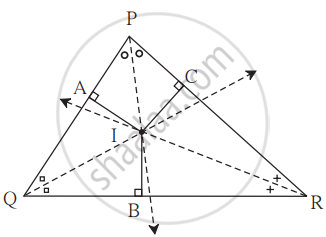Topics
Geometrical Constructions
- Concept of Angle Bisector
- Drawing a Perpendicular to a Line at a Point on the Line
- The Property of the Angle Bisectors of a Triangle
- Perpendicular Bisectors of the Sides of an Acute-angled Triangle
- Perpendicular Bisectors of the Sides of an Obtuse-angled Triangle
- Construction of Triangles
- Constructing a Triangle When the Length of Its Three Sides Are Known (SSS Criterion)
- Constructing a Triangle When the Lengths of Two Sides and the Measure of the Angle Between Them Are Known. (SAS Criterion)
- Construct a Triangle Given Two Angles and the Included Side
- Construct a Right-angled Triangle Given the Hypotenuse and One Side
- Congruence Among Line Segments
- Congruence of Angles
- Congruence of Circles
Multiplication and Division of Integers
- Concept for Natural Numbers
- Concept for Whole Numbers
- Negative and Positive Numbers
- Concept of Integers
- Concept for Ordering of Integers
- Addition of Integers
- Subtraction of Integers
- Multiplication of a Positive and a Negative Integers
- Multiplication of Two Negative Integers
- Multiplication of Two Positive Integers
- Division of Integers
HCF and LCM
Angles and Pairs of Angles
Operations on Rational Numbers
- Rational Numbers
- Addition of Rational Number
- Additive Inverse of Rational Number
- Subtraction of Rational Number
- Multiplication of Rational Numbers
- Division of Rational Numbers
- Rational Numbers Between Two Rational Numbers
- Decimal Representation of Rational Numbers
- BODMAS - Rules for Simplifying an Expression
Indices
- Concept of Exponents
- Concept of Square Number
- Concept of Cube Number
- Laws of Exponents
- Multiplying Powers with the Same Base
- Dividing Powers with the Same Base
- Taking Power of a Power
- Multiplying Powers with Different Base and Same Exponents
- Dividing Powers with Different Base and Same Exponents
- Numbers with Exponent Zero, One, Negative Exponents
- Miscellaneous Examples Using the Laws of Exponents
- Crores
- Finding the Square Root of a Perfect Square
Joint Bar Graph
- Concept of Joint Bar Graph
- Interpretation of a Joint Bar Graph
- Drawing a Joint Bar Graph
Algebraic Expressions and Operations on Them
- Algebraic Expressions
- Terms, Factors and Coefficients of Expression
- Like and Unlike Terms
- Types of Algebraic Expressions as Monomials, Binomials, Trinomials, and Polynomials
- Addition of Algebraic Expressions
- Subtraction of Algebraic Expressions
- Multiplication of Algebraic Expressions
- Multiplying Monomial by Monomials
- Multiplying a Monomial by a Binomial
- Multiplying a Binomial by a Binomial
- Equations in One Variable
Direct Proportion and Inverse Proportion
Banks and Simple Interest
Circle
- Concept of Circle
- Circumference of a Circle
- Relationship Between Circumference and Diameter
- Arc of the Circle
- Central Angle and the Measure of an Arc
Perimeter and Area
Pythagoras’ Theorem
Algebraic Formulae - Expansion of Squares
Statistics
Notes
The Property of the Angle Bisectors of a Triangle:

- Draw any ΔPQR.
- Use a compass to draw the bisectors of all three of its angles. (Extend the bisectors, if necessary, so that they intersect one another.)
- These three bisectors pass through the same point. That is, they are concurrent.
Name the point of concurrence ‘I’. Note that the point of concurrence of the angle bisectors of a triangle is in the interior of the triangle. - Draw perpendiculars IA, IB, and IC respectively from I on to the sides of the triangle PQ, QR, and PR. Measure the lengths of these perpendiculars. Note that IA = IB = IC.
Point to Remember:
The angle bisectors of a triangle are concurrent. Their point of concurrence is called the incentre, and is shown by the letter ‘I’.
If you would like to contribute notes or other learning material, please submit them using the button below.


